The 'lid' with the dimples that could have been something to do withholding it in place, arrowed. These drilled very easily and enabled me to lever it up.
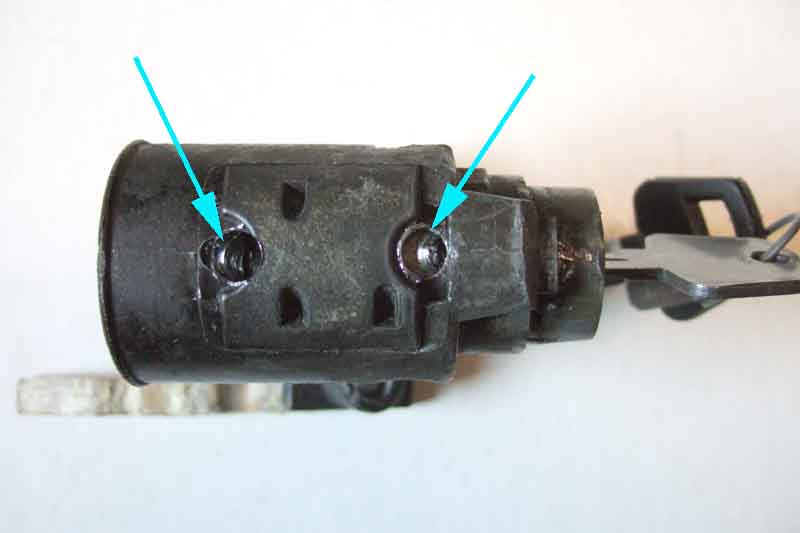
Instead there is a tiny pin in the side ...
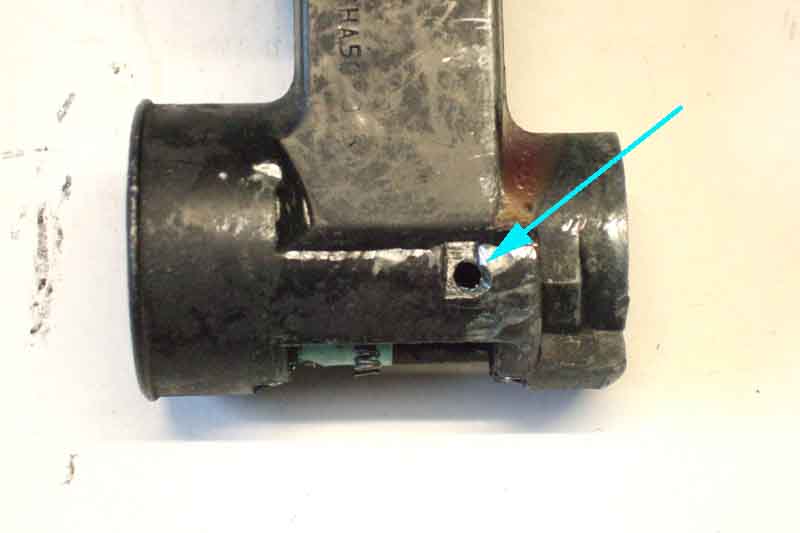
... through a 'cheek' on the lid. But the metal is so frangible that the cheek broke away quite easily when levering it up ...
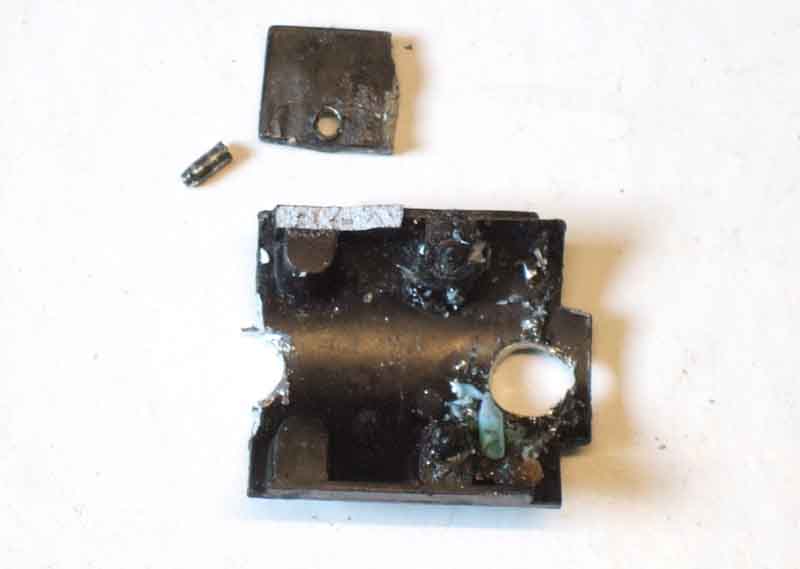
... to reveal the guts. The blue part carries the locking peg that moves out into a recess in the column inner to lock the steering, under the pressure of the two springs. Moderate persuasion in the direction indicated drove the barrel assembly out of the lock body:
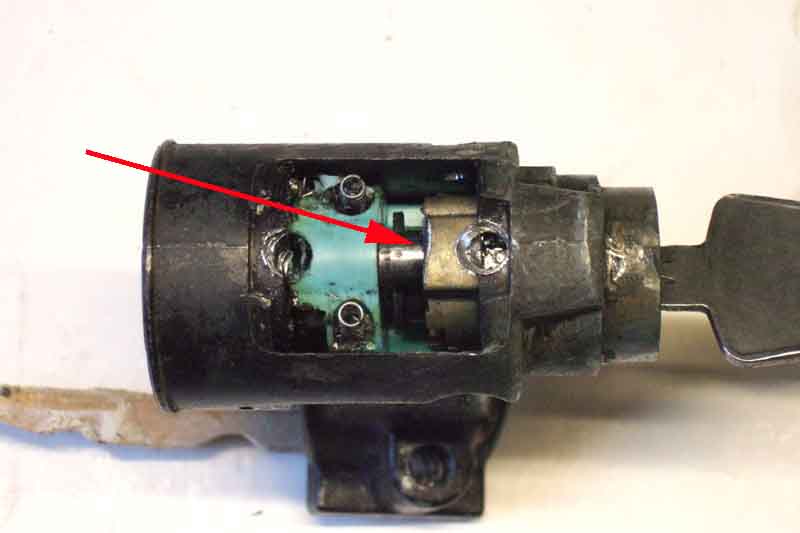
The barrel assembly, with A the rectangular shaft that turns the cam that operates the switch proper and the locking peg, B the levers that allow the correct key to turn, just short of the position that allows the key to be withdrawn, and C the rod that keeps the steering lock disengaged while driving:
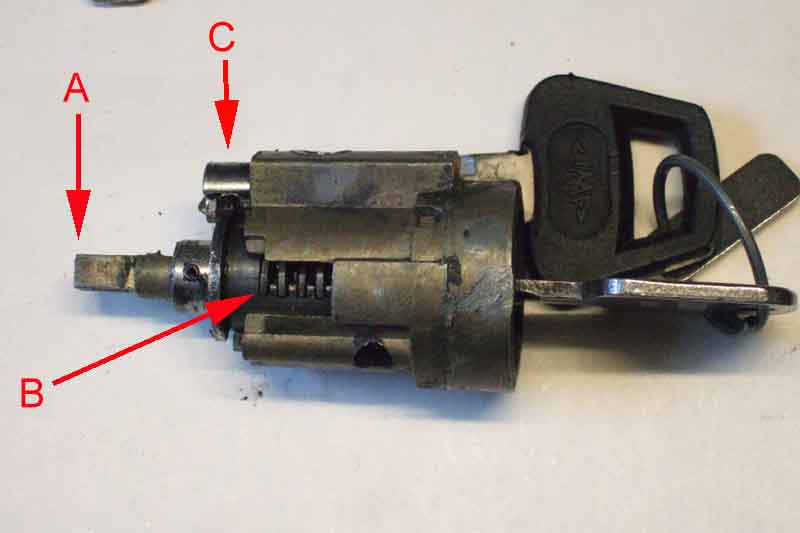
The locking peg in the unlocked position on the left, and locked on the right.
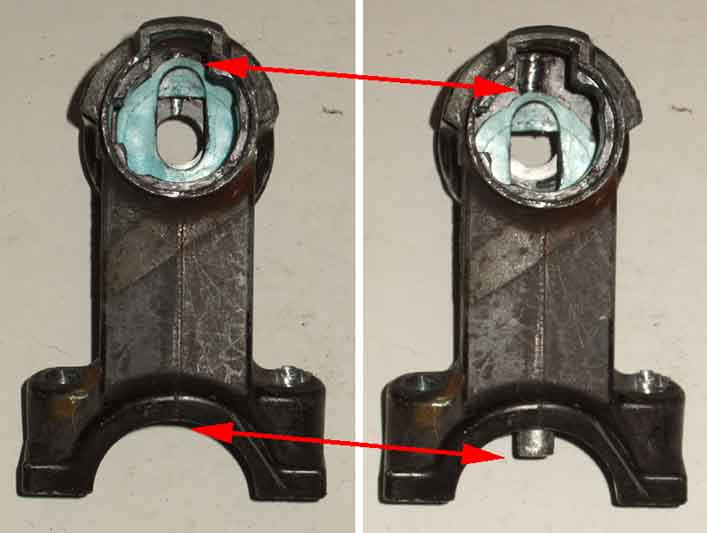
Whilst the largest part of the blue locking peg is plastic there is a substantial metal 'business end' that engages with the column to lock the steering. In fact given how easy the body is to drill it wouldn't surprise me if the wrenching action by thieves that is said to break the lock if it hadn't been engaged when parked, actually shatters the lock body rather than the locking peg, which then makes operating the switch part very easy:
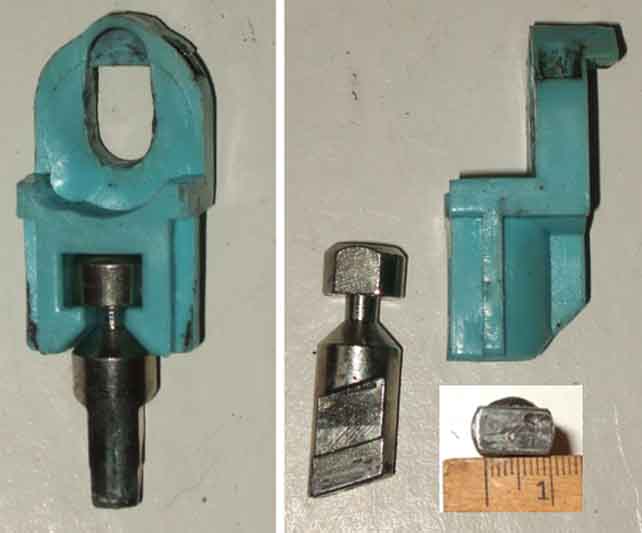
Showing how the white cam unlocks the steering from the locked position (A) by lifting the blue locking peg to the accessories position (B), the ignition position (C) and the crank position (D). Note that in the accessories position the pip on the white cam lifts the locking peg to a high position so that the rod in the barrel assembly (arrowed in A) can be inserted into the locking peg. When the key and hence the white cam is further turned to the crank position although the cam is no longer lifting it the locking peg is still held in the fully unlocked position by the barrel rod:

On the left the key hasn't been inserted, the blue locking peg A is the 'steering locked' position and the barrel rod B is withdrawn. On the right the key has been inserted and started rotation, white cam C has raised the locking peg and the barrel cam D has started pushing the barrel rod B into engagement with the locking peg to hold it in the unlocked position:
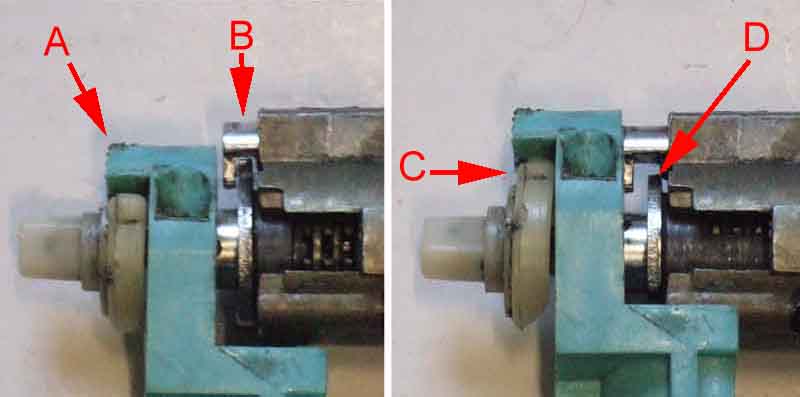
On the left the key has been turned to the crank position and the barrel rod has been fully inserted into the locking peg to reveal step E. As the key is turned back to the Off position a higher section of the barrel cam comes up against step E and prevents further rotation. On the right the key has done the first 'push' of the 'turn-push-turn-pull' process to remove the key: The higher part of barrel cam F has been pushed to the left past step E which allows the second 'turn' to take place, and when the 'pull' takes place to remove the key the higher part of the barrel cam pulls back against step E to pull the barrel rod out of engagement with the locking rod, and the steering lock engages:
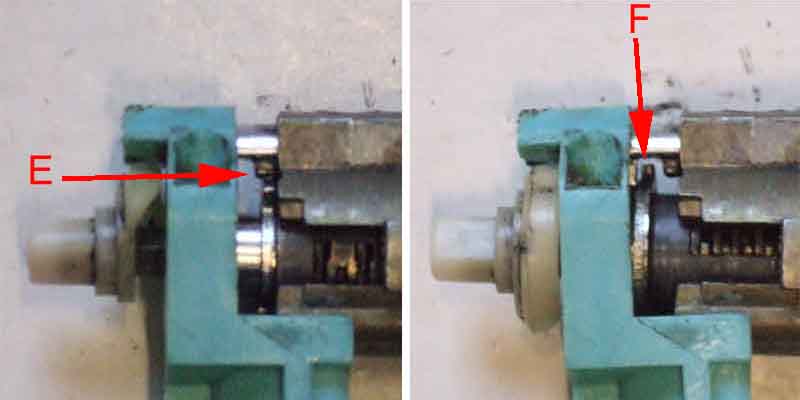
Showing the barrel rod A and cam B, key removed on the left, 'ignition on' centre, and crank right. As you can see any part of the cam can push (towards the viewer) the rod into engagement with the locking rod (not shown). But once pushed into engagement, the key and hence the cam can only be turned back so far before the higher part of the cam hits the side of the step in the rod (see E and F in the image above). At that point the key and hence the barrel and the cam have to be pushed further into the lock so that the cam can pass in front of the step in the rod. The final part of removing the key involves pulling it out which pulls on the barrel, and the cam pulls the rod back with it, out of engagement with the locking peg, to allow the lock to engage:

As well as being able to move the barrel in and out of the barrel assembly slightly with the key in any position there are also internal guides which means the barrel has to be moved in and out when moving from the Off position through the turn-push-turn-pull manoeuvre in order to remove the key. This is to ensure that the key cannot be turned straight from the ignition position to the withdraw position, which if done in an emergency could cause the lock to engage while still moving. This can be a bit of a fiddle if not familiar with the lock, and later versions have a simpler push-button that has to be depressed before the key can be withdrawn. Of course both can be defeated if you try hard enough, it's only meant to prevent inadvertent engagement of the lock!
Note that even when the key has been removed the locking peg will only fully drop into position and lock the steering once the corresponding slot in the column shaft is in line with it. For that reason strictly speaking when parking after removing the key one should always turn the wheel to lock the steering, as in the past there have been reports (generic, not specifically relating to an MGB) that with unlocked steering, if the wheel is wrenched violently in a theft attempt and the lock engages it can break the lock.
